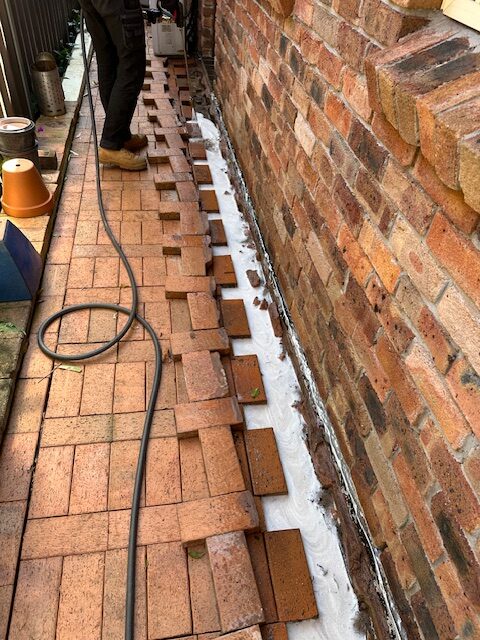Landscaping enhances the aesthetic appeal and overall value of your home, but if not executed with careful consideration, it can also inadvertently disrupt the integrity of termite barriers.
These protective systems are vital for shielding your property from harmful termite infestations.
Unfortunately, certain landscaping choices and maintenance routines can interfere with these barriers, making them less effective.
This guide will provide you with essential insights to ensure your landscaping remains safe from termites while effectively preserving your protective barriers.
Explore the Importance of Termite Barriers for Home Protection
Termite barriers are specialized systems, either physical or chemical, that are strategically installed around or beneath your home to prevent termites from gaining access. Every residence should have a termite management system, and it’s crucial to understand what type is installed at your property.
The simplest way to verify this is by checking your electrical meter box, where you should find relevant information.
These barriers play a critical role in safeguarding structures, particularly in regions like Sydney’s Hills District, where termite activity is notably prevalent.
- Physical Barriers: Typically constructed from materials such as stainless steel mesh or graded stones, these barriers are installed beneath a building to effectively block termites from tunneling through.
- Chemical Barriers: These involve the application of liquid termiticides to the soil surrounding a structure, creating a treated zone designed to deter or eliminate termites.

Discover How Landscaping Choices Can Compromise Termite Barriers
Many landscaping practices may inadvertently damage or undermine termite barriers, creating potential vulnerabilities that can lead to serious infestations.
1. Planting Too Close to Your Home
When plants, shrubs, or trees are situated too near your house, they can cause a multitude of problems:
- Roots may penetrate physical barriers or disrupt the treated soil in chemical barriers, reducing their effectiveness.
- Thick vegetation can retain moisture right next to the building’s foundation, which is a major attractant for termites.
2. Adding New Soil or Mulch
When you add layers of soil or mulch near the foundation, you risk creating a bridge over chemical barriers that allows termites to bypass the protection. Organic mulch, in particular, can provide both food and shelter for termites, making it a tempting habitat.
3. Paving and Hardscaping Projects
The installation of paving, patios, or retaining walls near your property can disrupt existing termite barriers. The movement of soil during these projects might break the chemical seal or create gaps in physical barriers, leading to vulnerabilities.
4. Irrigation System Considerations
Poorly designed or overwatering irrigation systems can saturate the soil around your foundation. This not only dilutes termiticides in chemical barriers but also creates a favorable environment for termites to thrive.

Implement Effective Landscaping Strategies to Protect Termite Barriers
1. Ensure Safe Clearance from Your Home
- Maintain a distance of at least 50 cm between plants and trees and your home's foundation, ensuring a safe barrier.
- Select smaller, non-invasive plants that are unlikely to develop large root systems that could interfere with your barriers.
2. Choose Termite-Resistant Mulch Options
- Opt for inorganic mulches like gravel or stone, or consider termite-resistant options such as cedar or cypress chips to minimize risk.
- Limit mulch piles to no more than 5 cm in height and ensure they are maintained at least 15 cm away from the foundation to reduce moisture retention.
3. Avoid Disrupting the Barrier During Landscaping
- Consult with a professional before digging or installing landscaping features near your home to avoid disturbing the termite barriers or termite baits.
- In the event of soil alterations, it is advisable to have the barrier reinspected and potentially retreated to ensure continued protection.
4. Thoughtful Design Considerations
- Position irrigation systems away from the foundation to prevent excess moisture accumulation near the barrier.
- Install root barriers for larger trees to prevent roots from encroaching on the termite barrier and causing damage.
- Be mindful of termite reticulation pipes to avoid damaging them during landscaping activities.
Steps to Take if Your Termite Barrier Has Been Compromised
If landscaping activities or natural occurrences have disturbed your termite barrier, swift action is crucial:
- Schedule a Professional Inspection: A comprehensive termite inspection will help identify vulnerabilities and confirm if termites have breached your protective barrier.
- Reinforce Your Barrier: Depending on the assessment, physical barriers may require repairs, while chemical barriers might need retreatment or a top-up to restore their effectiveness.
- Implement Regular Monitoring: Routine inspections for termites are essential to ensure your barrier remains intact and your property stays protected.
Landscaping Solutions That Strengthen Termite Protection
With careful planning and strategic design, landscaping can effectively complement your termite protection efforts:
- Incorporate gravel paths or decorative stones along the foundation to create a dry zone that deters termites.
- Utilize raised garden beds with sufficient clearance from the house to minimize moisture retention near the foundation.
- Regularly trim vegetation to ensure adequate ventilation and reduce moisture buildup, creating an inhospitable environment for termites.

Landscaping can be designed to enhance, rather than compromise, your termite barriers.
By gaining a strong understanding of how various yard designs impact termite protection, you can achieve a beautiful and pest-free home environment.
For expert termite advice or assistance with maintaining your barriers, reach out to our knowledgeable team today.
Let us partner with you to secure your home while you create the landscape of your dreams.



Your post sheds light on a critical aspect of home maintenance that often goes unnoticed in the aesthetic pursuits of landscaping. The intersection of beauty and structural integrity is indeed a delicate balance, and it’s fascinating how decisions made in the garden can have far-reaching implications on the main structure of a home, especially when it comes to termite barriers.
The balance between beauty and structural integrity in landscaping is such an interesting topic to explore. You’ve highlighted something that often gets overlooked—how our choices in the garden can impact not just the visual appeal but the very foundation of our homes.
I have to admit, when I first started landscaping, my primary concern was how to make my yard look like it belonged in an Instagram photo. Sure, aesthetics are important—nothing like a carefully curated floral display to make you feel like the monarch of your own little kingdom. But the idea that I might inadvertently roll out the welcome mat for termites? Yikes! It feels like I’ve been blindly walking a tightrope while juggling gardening tools.
It’s interesting how landscaping can sometimes feel like a balancing act, isn’t it? I’ve been in that same boat, striving to create a yard that turns heads while also trying to keep it healthy and pest-free. Aesthetic appeal can definitely lure you in, but learning about the hidden complexities, like termites and other pests, makes it a bit of a puzzle.
I totally get that mix of wanting a picture-perfect yard while also fearing surprises like termites; it’s a balancing act, much like tackling gutter replacements safely—something I learned a bit about recently.
‘Scaffolding: Essential for Gutter Replacement Safety’
https://writebuff.com/scaffolding-essential-for-gutter-replacement-safety/.
I can totally relate to that feeling of wanting your yard to be Instagram-worthy. It’s amazing how much pressure we put on ourselves to create the perfect outdoor space. A vibrant floral display can really elevate the vibe of our homes and give us a sense of pride, but you’re right—it’s not just about looks. The whole idea of termites lurking around is unnerving for sure.
I’ve been there too, chasing that perfect backyard vibe while juggling potential pest pitfalls; speaking of safety in home projects, I found this article on gutter replacement that really sheds light on using scaffolding effectively.
‘Scaffolding: Essential for Gutter Replacement Safety’
https://writebuff.com/scaffolding-essential-for-gutter-replacement-safety/.
It’s interesting how landscaping can be a double-edged sword in terms of home maintenance, isn’t it? On one hand, creating a beautiful outdoor space enhances our home’s charm, but on the other, it can create hidden risks like compromising termite barriers. I remember when I landscaped my backyard, I unintentionally planted some flowers too close to the foundation. It made for a lovely view, but I had to rethink that because I learned about how certain plants can create pathways for termites.
Your discussion on the potential pitfalls of landscaping when it comes to the integrity of termite barriers is particularly relevant and illuminates a common oversight in home maintenance that many homeowners may not consider until it’s too late. I can certainly relate, as I’ve found myself experimenting with different plants and hardscapes in my yard, only to later realize the unintended consequences they can have on underlying structures like termite defenses.
It’s interesting how landscaping can turn into such a double-edged sword, isn’t it? Your experience with experimenting in your yard really resonates with me. I also had a phase where I got carried away with planting a bunch of native species, thinking I was doing something great for the environment. But then I started learning more about how certain plants can retain moisture and inadvertently create an inviting environment for pests like termites. It seems like every choice we make outside has deeper implications than we initially see.
It’s interesting to think about how landscaping and pest prevention intersect—it’s often overlooked in the quest for a beautiful outdoor space. I’ve seen firsthand how a lovely garden can unintentionally create hiding spots for pests if not planned carefully. For instance, raised garden beds or mulch too close to the foundation can actually provide pathways for termites.
You bring up a really important point about the interplay between landscaping and pest prevention. It’s fascinating how a beautifully designed garden can come with its own set of challenges if you’re not aware of the potential for pests. I’ve had my share of experiences where a well-meaning planting choice turned into an attraction for unwanted visitors.